When Is The Best Time To Harvest Your Cannabis Plants?
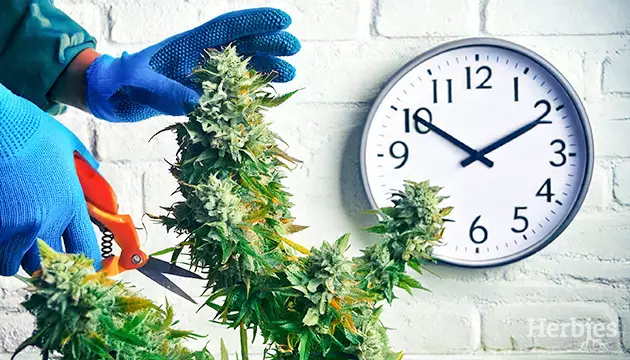
Harvesting your cannabis plants is a culmination of months-long growing efforts. Timing it right is crucial as it ensures that flavors, effects, and the overall quality of cannabis buds will be just as you expected. In fact, early or late harvesting can put into question all of your hopes and expectations from your crop. To help you harvest your plants in the correct timeframe, we have put together all of our harvesting know-hows to guide you to the best growing results and allow you to enjoy cannabis cultivation.
How To Determine The Best Harvesting Time
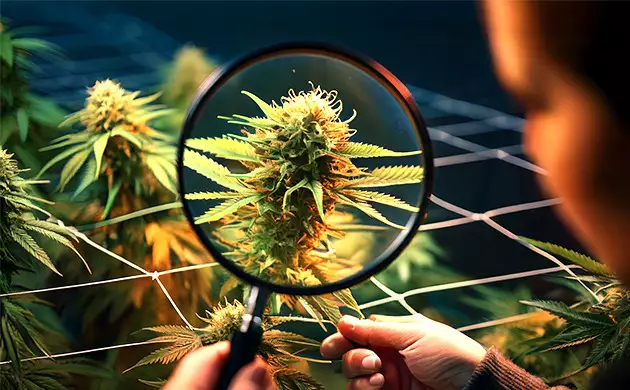
When in Rome, do as Romans do. When harvesting cannabis, do as professional growers advise. Here are three methods that can help you determine when to harvest your cannabis plants. Each of them varies in accuracy and some may require special tools:
- Flowering time recommended by the breeder
- The color and the shape of pistils
- The color of trichomes
Harvesting Based On Flowering Time
Most breeders indicate the flowering time for their strains to help growers plan the growing schedule. However, these figures work more like general guidelines, tailored for the ideal growing environment. In real life, the flowering time can change under the influence of multiple factors like climate or weather conditions, choice of lighting, temperature regime, water, and feeding patterns. The fact that the average flowering time can vary and change makes this method less accurate. The good news is that it is a nice way to set up your growing schedule. Just be prepared to wait a few extra weeks until your plants are ready to harvest.
Looking For Red Or Brown Pistils
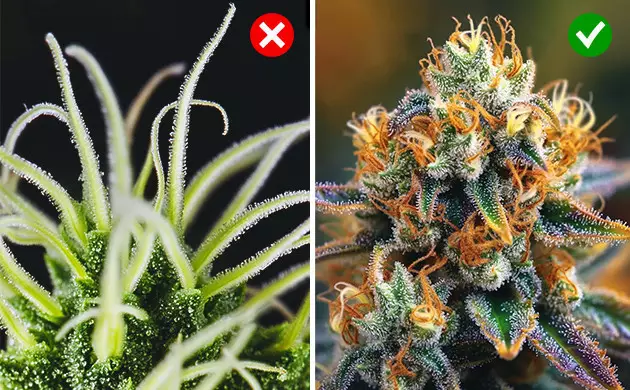
Harvesting based on the color and shape of pistils is a more accurate method as it shows the actual plant’s condition. Pistils, or stigmas, are small hair-like strands covering the buds. As the plant matures, the color and shape of pistils vary. Once pistils curl up and start changing their color from white to orange, red, or brown, it means that your plant is close to its peak. Some cannabis strains may feature different colors of pistils; including pink, violet, or purple. In the end, when the plant is ready to harvest, pistils all change their color to some shade of red or brown.
Looking At Trichomes
Looking at the plant’s trichomes is another smart way to determine if your cannabis plant is at its peak of maturity. Supported by lab tests and research results, it is probably the most accurate of all methods. Cannabis trichomes are little, mushroom-like glands where cannabinoids, terpenes, and flavonoids are located. They appear on buds and leaves as a resinous coating, giving your plants the frosty or sugary look.
As cannabis plants mature, they will change color from transparent to milky white and then shift to amber meaning it's time to harvest your cannabis plants. Trichomes are very small, so you may need a magnifier glass, jeweler’s loupe, or a microscope to see their color properly.
- Transparent Trichomes
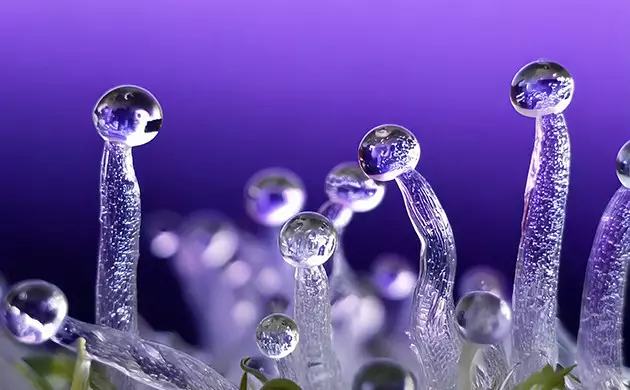
Cannabis plants develop trichomes from the beginning. If trichomes are transparent it means that the plant is still immature and it is too early to harvest. At this stage, pistils are white and the plant keeps producing flowers. The plants are far from their peak potency and harvesting at this time will leave you with less potent buds.
- Milky White Trichomes
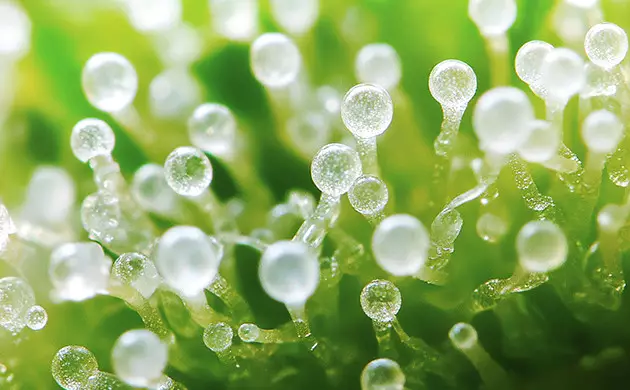
Once the harvest comes close, trichomes will change their color from transparent to milky white. At the same time, pistils will get brown hues. At this stage, the CBD production is at its peak. If you are looking for CBD-rich buds, the best time to harvest is when 85-90% of trichomes are milky white while the rest of them are transparent. When most trichomes are still cloudy white, effects tend to be more uplifting, energizing, and euphoric as the THC production is close to its peak and there is still a lot of CBD in the buds.
- Amber Trichomes
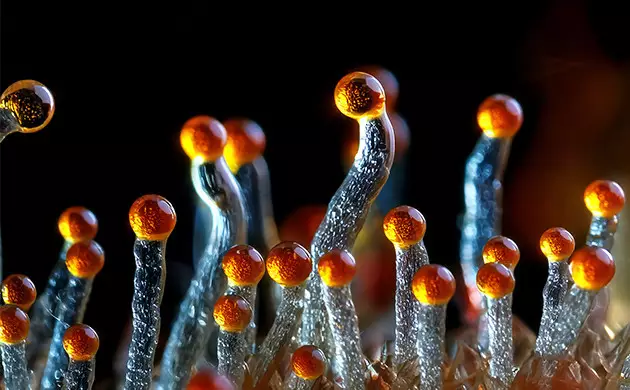
In the final stages of flowering, trichomes will change their color for the last time. From milky white they turn amber. At the same time, pistils will curl up, with most of them changing their color to red or brown. It is the best time to harvest your plants if you are looking for THC-rich or better-tasting buds. When pistils turn red or brown, the THC production is at its peak. Depending on the percentage of amber trichomes, effects will vary from more sleepy, relaxing, or even couch-locked, to uplifting and energizing. That is because THC starts to degrade and change to CBN, which is not psychoactive but works great as a sleep aid.
More Waiting, More Resin?
Lured with long awaited buds, novice growers often rush to harvest too early. The choice is yours, but experienced growers know that growing cannabis is about patience and enjoying the whole process from seed to harvest. Buds need time to gain weight and potency – most cannabis plants get completely covered with resin only during the final weeks of flowering. Although resin-soaked leaves and buds are a good sign of potency, some plants deliver extremely potent buds showing less sign of resin – it's all about different strain genetics and phenotypes.
If you just can’t let yourself wait and need to start harvesting cannabis as soon as possible, we suggest starting from the strains that are quick, but, nevertheless, potent and resinous. Only in this case your cannabis harvest won’t fall victim to your time constraints, because some strains are just made to be quick. Here’s a couple of examples:
Sugar Black Rose Early Version (Delicious Seeds)
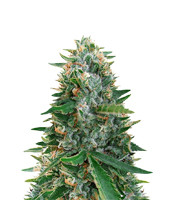
- Photoperiod
- 450 g/m² indoors
900 g/plant outdoors - A flower of calmness
Made to be quick yet potent, Sugar Black Rose Early Version will show her ready amber trichomes after just 45 days of flowering indoors or in early September outdoors. Despite the quick turnaround, this strain develops lots of resin with cerebrally-stimulating effect and 25% THC.
Purple Juice Auto (Herbies Seeds)
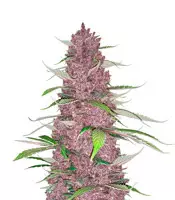

- Autoflowering
- Between soothing and energizing
- 400 - 550 g/m² indoors
250 g/plant outdoors
If you’re afraid of harvesting weed too early, stick with autoflowers, like Purple Juice Auto. Not only it’s stunningly beautiful, this strain also develops an abundance of fruity resin and a perfectly high 23% THC count! If you want to feel happy and relaxed while growing AND smoking, choose Purple Juice Auto.
Sweet Skunk F1 Fast Version (Sweet Seeds)
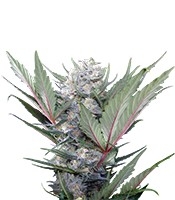

- Photoperiod
- 400 - 550 g/m² indoors
350 - 600 g/plant outdoors - Sweet body relaxation
With Sweet Skunk F1 Fast Version the only worry you’re going to have is watching out for over ripe trichomes, because this beast of a strain is really quick. With only 6-7 weeks in bloom, this weed variety is a great find for growers who value their time. By the end of the grow, you’ll enjoy classic relaxing Skunk effect that envelops both your body and mind like a warm, cozy blanket.
Longer Is Not Necessarily Better
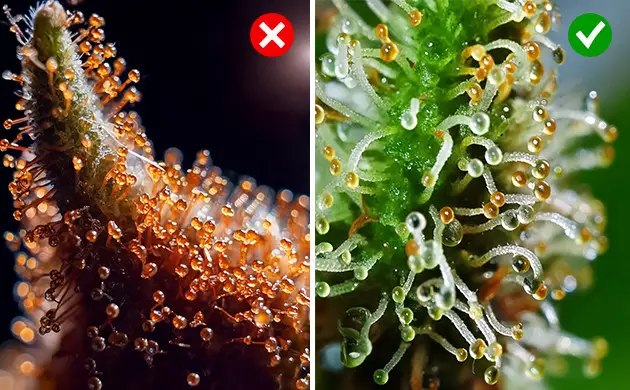
Being patient with your cannabis plants is half the battle. Some growers put off harvesting in hope that the extended flowering period will make plants produce more buds and bring bigger yields. When you harvest late, what you actually end up with is less cannabinoids and terpenes in your buds. The reason is that the more volatile terpenes and cannabinoids degrade with time. Harvesting your plants when up to 50% of trichomes are amber will leave you with fewer quality buds in the end.
Maximizing Quality Of Your Crop
Once your plants are getting closer to the harvesting stage, there are a few things that can help you maximize the quality of your yield and get even better results than you thought.
Flushing

Flushing plants before harvest is a very common practice among all types of growers. You may think that flushing involves shoving a cannabis bush down the toilet, but in fact, it's just watering plants with lots of water without nutrients added. The purpose of flushing is to allow the plant to dispose of all salts, and other compounds obtained from nutrients given during the whole lifecycle. This helps to reduce the overall rate of contaminants in the final product and ensures the best taste and aroma.
48-72 Hours Of Complete Darkness
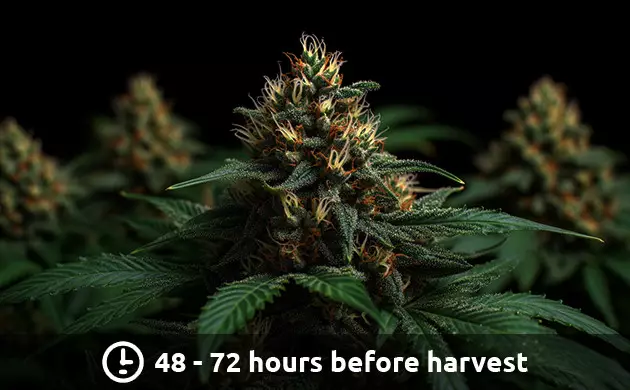
What else can you do to improve the quality of your buds before harvesting? Some indoor growers prefer keeping plants in total darkness for 48-72 hours before they cut them. The purpose of this practice is not to give your plants a scare but to enhance resin production and cut resin-rich buds when your plants “come out of the darkness”.
Grower’s To-do List Before The Harvest
- Make sure that plants are clear from mud, insects, and other non-plant material
- If the plants are infected with mold or mildew, wash them with pure water first. Then add a bit of baking soda and lemon juice mixed with water.Then rinse plants with clean water
- If the infection has spread, it is best to remove the infected parts all together
- If you are growing cannabis outdoors, make sure you harvest your plants before the first frost
- Never harvest during rain and give your plants enough time to dry
What To Do When It’s Time To Harvest?
When you checked the trichomes and saw that your plants are ready for harvest, simply chop the branches or the entire plant down. You can use scissors, saws, or whatever tools that will get the job done. Remember that the trichomes are very delicate and fragile. After you have chopped your plants, handle them with care and avoid shaking.
In general, all harvesting techniques are very simple and more or less the same. You can remove parts of the plant i.e. branches, leaves or buds, or cut the whole plant down. Since not all parts of the plant are equally exposed to light, they mature at a different rate. To get the maximum of your harvest, remove the top parts of the plant first and leave the bottom ones for a week or two. This way the lower buds will get properly matured and your overall harvest will increase.
Multiple Harvests: Are They Real?
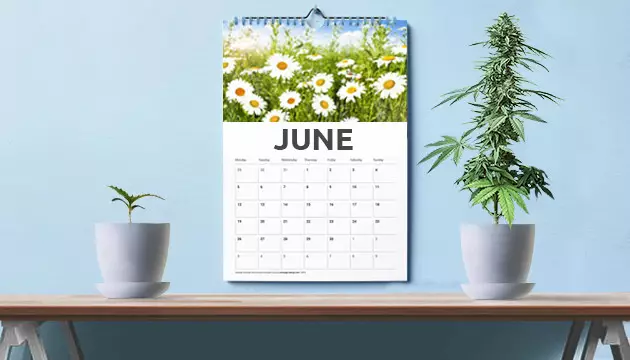
Sure they are! Multiple harvests are available with autoflowering cannabis varieties that do not need a change in the light cycle to start flowering. That is how they can bring multiple harvests in one season. Plant your first batch in March or April and harvest your plants 2-3 months later. Plant the second batch in June or July and chop them in September or October. Easy as pie! Some smart growers manage to get multiple harvest of their photoperiod plants using light deprivation or by removing the buds during the harvest and letting their plants produce another batch. What a trick!
Be The Master Of Your Crop
Buds harvested at different times will give you different effects, so when in doubt, it is best to listen to your gut. Keeping a close eye on the trichomes and pistils will give you the best idea of what cannabinoid and terpene levels are, but only YOU know how you want your buds to turn out. This means that all methods are just general guidelines, but we hope you are now closer to getting your bud the way you want it.
Happy growing!
Herbies Head Shop expressly refuses to support the use, production, or supply of illegal substances. For more details read our Legal Disclaimer.


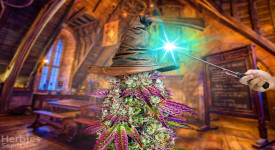

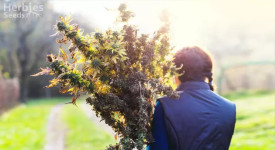
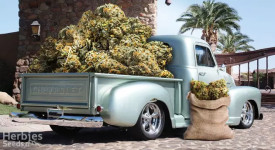
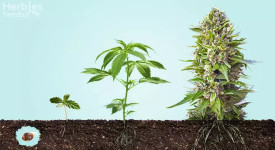
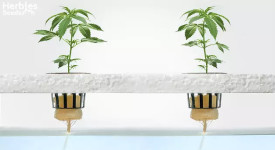
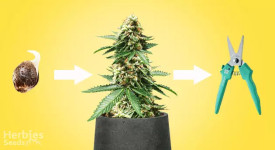
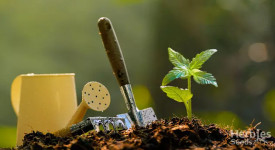
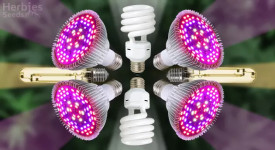

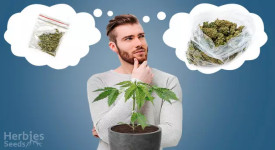
Thank you for leaving a comment for us!
Your feedback will be posted shortly after our moderator checks it.
Please note that we don’t publish reviews that: